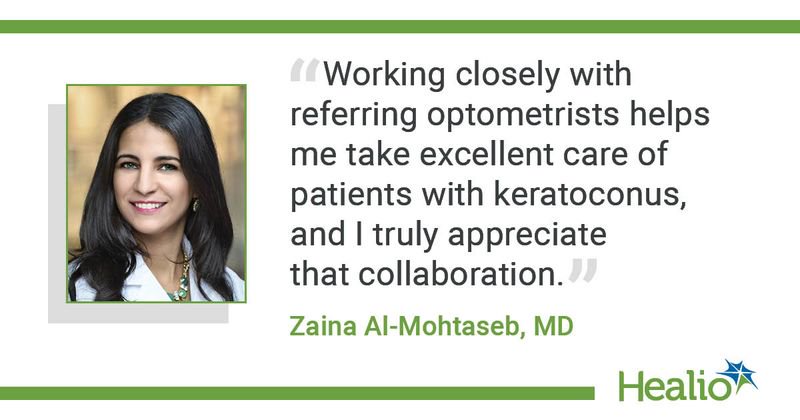BLOG: Four reasons optometrists don’t send you their keratoconus patients
Key takeaways:
- Keratoconus management requires collaboration over many years.
- It is important to understand why optometrists may hesitate to refer a patient.
As I have transitioned from academic medicine to private practice, I have been working with our practice liaison staff on outreach to optometrists and other referring doctors in the greater Houston area.
As we share information about keratoconus and our cross-linking services, I’m struck by how often I hear the same four concerns. Cynics often couch optometrists’ reluctance to refer as being based in financial concerns or optometry-ophthalmology turf battles, but I have found that the underlying motivations are actually quite different.

1. The doctor had a bad experience in the past. Perhaps they had a patient whose keratoconus continued to progress or who developed serious haze after cross-linking. To address these concerns, we educate our referral network about success rates with the FDA-approved iLink procedure (Glaukos) that we perform and all the measures we take to optimize healing, including treating underlying ocular surface and atopic disease to facilitate epithelial healing. There are potential risks with any procedure, but in this case, the benefits of cross-linking far outweigh the risks.
2. They worry about losing the patient. A lot of times, this is interpreted as a financial concern, but in my experience, it is just as likely to come from a desire to maintain the patient’s continuity of care. Doctors who have referred patients and never see them again worry about whether their patient had a good outcome, whether they have been lost to follow-up, and whether they are continuing to get appropriate vision care. One way that I allay these concerns is to be very clear that caring for a keratoconus patient is a collaborative effort. Most keratoconus patients will need gas permeable or scleral lenses to achieve their best vision, and because we don’t fit any contact lenses in our practice, I look to the referring optometrists to fit patients in lenses, beginning as early as 1 month after cross-linking. I also rely on the referring doctor to continue to monitor cross-linked patients for signs of progression, so I try to encourage a collaborative atmosphere and keep the lines of communication open because that is what is best for patients.
3. They don’t realize the patient is progressing. Ironically, as scleral lenses have gotten better and more doctors have become comfortable fitting them, progression of keratoconus can more easily go undetected. Scleral lenses are very good at masking worsening corneal steepening, and because the patient is seeing well and not complaining, progression can drop off the radar. I encourage the doctors in my referral network to raise their level of concern about worsening myopia or an increase in astigmatism of even as little as 0.5 D, and I encourage a full corneal evaluation for any patient with keratoconus, regardless of visual status.
4. They don’t want to “bother” a specialist. It is very common for clinicians to put off a referral because they aren’t 100% sure it is needed. This is particularly the case with very early-stage keratoconus patients — the ones we most want to catch progression right away for early intervention — and for older keratoconus patients who are assumed to be stable. I let referring doctors know that I’d like to evaluate every keratoconus patient or suspect and that they should never feel bad about referring someone who turns out not to require cross-linking. If nothing else, we will have a solid baseline topography/tomography on which to base future management decisions.
Management of keratoconus really does require collaboration over many years. Cornea specialists must work closely with our referral networks to identify patients at risk, cross-link eyes with progressive keratoconus before vision is lost, and maintain healthy eyes and good vision as patients age with this disease. Working closely with referring optometrists helps me take excellent care of patients with keratoconus, and I truly appreciate that collaboration.
Collapse
